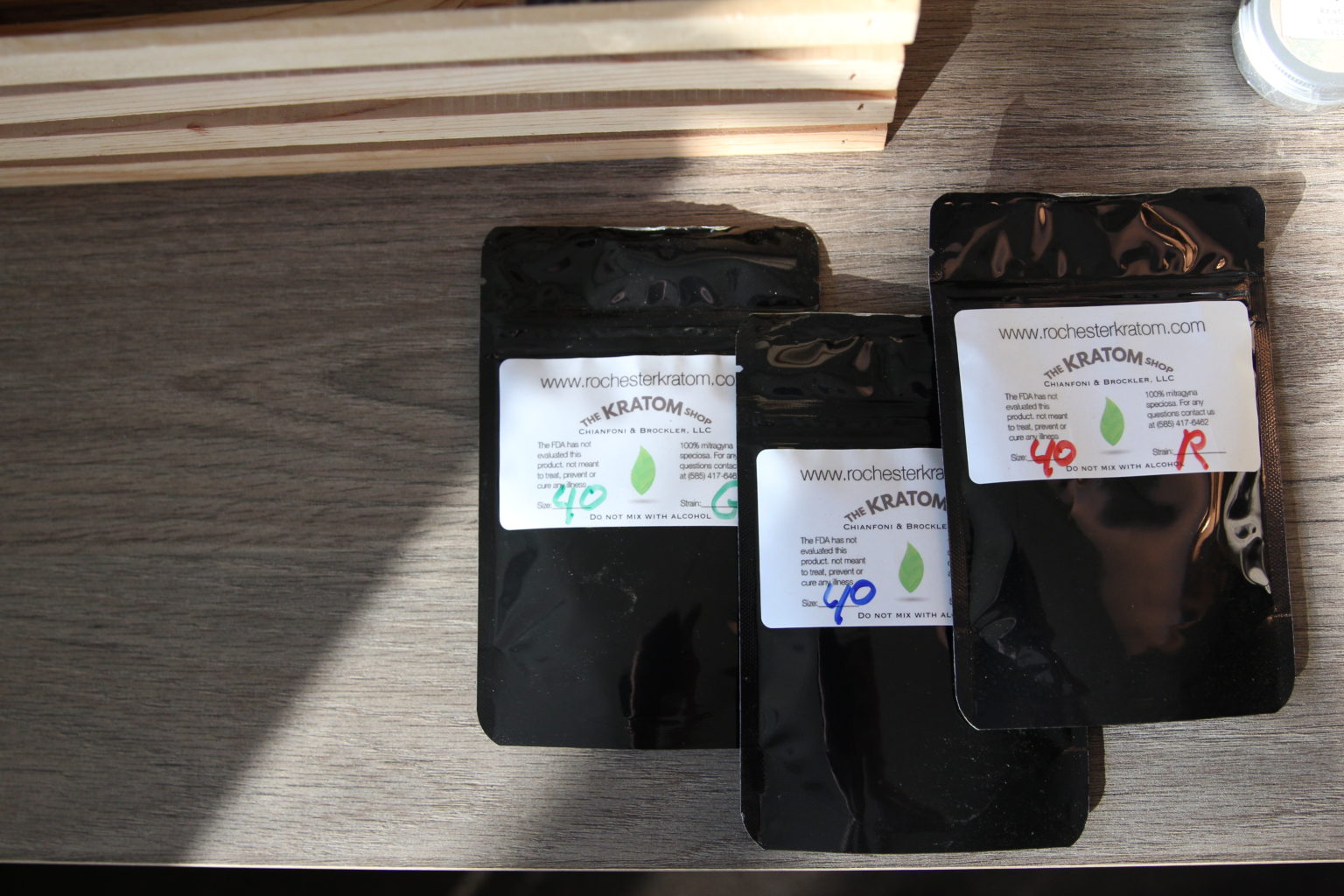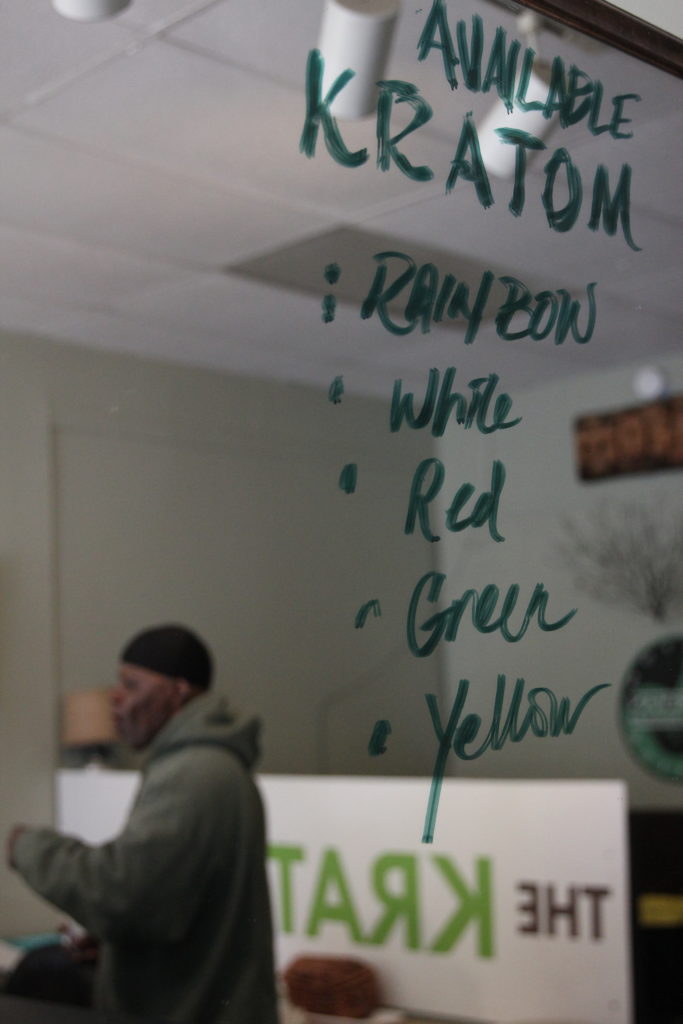Written by Cecelia Gotham
Photographed by Pete Wayner
For the fully stylized version of this article with additional illustrations, pick up a free physical copy of No Boundaries issue 5 anywhere in Buffalo or Rochester or review it here on issuu.
It’s estimated that roughly 5 million Americans have used Kratom as of 2016, but for many, this natural plant remains a foreign concept. The tree, which comes from Southeast Asia, produces leaves which can be eaten in raw form or turned into a green powder, usually consumed as a tea or in capsule form. The substance derives from the same family as the coffee tree, but it has become heavily scrutinized in the past several years. When taken in small doses, Kratom can serve as a stimulant, giving you energy, but when it is taken in larger portions, it can instill the feeling of a sedative, relieving pain and anxiety. Because of these differing effects, it has become a more common tool to treat some forms of addiction, but not without raising many questions.

In 2017, more than 70,000 Americans died from a drug overdose and over 15,000 of those deaths were blamed on heroin use, according to the National Institutes on Drug Abuse (NIDA). With these alarming and rising numbers, the President’s Commission on Combating Drug Addiction and the Opioid Crisis called for further research and development of alternatives to opioids for pain management, which often times is the leading cause of addiction. This has put a microscope on Kratom. Because it has become a mechanism to wean some individuals off of dangerous opiates, more studies on Kratom continue to take place. Each study shows that upon consumption, the opioid receptors in the brain become triggered – setting off red flags to the Drug Enforcement Administration (DEA).
Although the science that is readily available on Kratom clearly shows the effects on opioid receptors in the brain, it is also differentiated from classical opioids in its chemistry, overall effects on the body, and origin. When Kratom is consumed in its intended use, in raw plant form, it does not appear to produce the highly addictive euphoria or respiratory depression as compared to that of classical opioids according to a study conducted in 2016 from the Journal of the American Chemical Society. Skeptics most often point out that Kratom is not a perfect solution. As of 2017, a total of 44 deaths have been associated with its use, but that research has been highly debated because according to the government’s own NIDA “most kratom associated deaths appear to have resulted from adulterated products (other drugs mixed in with the kratom).”


AVAILABLE LOCALLY, AND [STILL] LEGALLY
Questions remain as to whether Kratom will remain legal in the United States. Several states and counties (including TN, IN, WI, VT, AR, AL, San Diego, CA and Sarasota county, FL) have outlawed the substance. Medical advocates of Kratom from all over the country, however, continue to push for lawful access to kratom. High ranking politicians (umm HI Bernie Sanders, Cory Booker and even conservatives like Orren Hatch) have come forward advocating for Kratom to stay on the open market, especially amidst the current opioid crisis. This public pressure and advocacy has prevented Kratom from staying on the DEA’s Schedule 1 list, which would cause the plant to be treated the same way as LSD or heroin. Kratom is the first substance to ever be placed on Schedule 1 and then be removed. That said, there is an overwhelming sense of public fear from Kratom users, that this natural alternative may still be banned. Kratom has allowed many who have struggled with overcoming addictions to find a new path in life. Without another alternative to Kratom on the market, the future of the opioid epidemic in America remains in jeopardy.
Rob Brockler, 37, of Rochester, NY has seen the life-changing effects of Kratom in his own personal life as well as many others. In 2017, Brockler opened up Western New York’s first botanical boutique. I walked into The Kratom Shop on Monroe Ave to meet with Rob and he was in the middle of helping a new customer. She was struggling with addiction and had heard about Kratom from a friend, so she wanted to give it a shot. I watched Rob hand her several different bags of Kratom on the house. Each strand of Kratom has a different impact on the body. He told her to try each one and see what works best for her, then to come back. When I asked Rob why he gave the woman nearly $200 worth of Kratom, he responded with, “I can tell when someone is coming in here to bullshit me and when someone really needs help.” People of every walk of life come into the store every day. They tell Rob their story and he listens. He hugs them, he hears them, and may even cry with them. Brockler, opiate free for 8 years, states, “I may be a business owner, but I’m an advocate and activist first. I want to help people find their breakthrough moment.”

Brockler opened The Kratom Shop to make access to high quality Kratom easier for Rochester residents. Using the slogan, “Plants Not Pills,” Brockler and his team are working to win the fight for Kratom access.
“I ran with the wrong crowd for many years. I got myself involved with some bad people and bad situations. I was struggling with all kinds of addiction and I was in desperation to get clean. Seven or eight years ago, I overheard a conversation between two older gentlemen about this leaf and I started doing some research, went through a process of trial and error. I was ordering stuff online, checking out smoke shops that had it available and trying it out. Then about six years ago I found a really good reliable vendor and I’ve been with them ever since because they are super ethical and their product is really pure. There are a lot of people out there selling bad Kratom, but I found these guys and stuck with them.”
“We are in the middle of the worst opioid crisis this country has ever faced. I’ve been a part of this crisis and somehow managed to find a way out. I have friends and loved ones who haven’t found a way out. After using Kratom for several years I knew I had to do what I could to help other people have a breakthrough moment like I have.”
“Bottom line – Kratom is a tool that can be used effectively to get people off prescription drugs or addictive substances such as heroine, but there is a lot of fear out there due to misinformation campaigns or lack of information in general. When used responsibly, I have seen how it can help so many people overcome addictions.”






